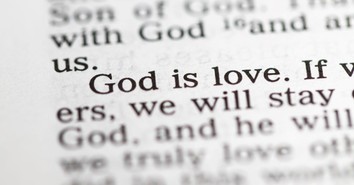What Is the Meaning and Symbolism of the Candy Cane?

It’s beloved by all, and for some, it isn’t considered Christmas unless one has this in his/her hand, tree, or in a tray within reach of everyone in the house. No, it’s not Hershey© kisses or M&M’s©, even though those are good guesses. It is the candy cane. Everyone can probably recall sometime in their lives, whether as children or adults when they were happily eating the sticky goodness of a candy cane during the month of December. That is probably the reason why it is the number one top-selling, non-chocolate candy in December, with 1.76 billion candy canes made every year in the United States. Even with the candy cane being so iconic to Christmas tradition, there are several hidden and fun facts about the tasty treat that many may not know.
Meaning and Symbolism of the Candy Cane
Shape:
- J-shape: The candy cane is shaped like the letter "J," symbolizing Jesus, the central figure of Christianity.
- Shepherd's staff: Turned the other way, it resembles a shepherd's staff, representing Jesus as the Good Shepherd who guides and protects His flock (John 10:11).
Color:
- White: The white color signifies the purity and sinlessness of Jesus Christ.
- Red stripes: The red stripes symbolize the blood of Christ shed for humanity's sins during His crucifixion. Some interpretations suggest the larger red stripe represents Jesus' sacrifice, while smaller stripes (if present) may symbolize the stripes He received during His suffering on the cross.
Texture:
- The candy cane's hardness reflects the solid foundation of faith and the strength of Jesus as a "rock."
Flavor:
- Peppermint: This is reminiscent of hyssop, a plant used in biblical times for purification (Psalm 51:7), symbolizing Jesus' role in spiritual cleansing.
Origin of the Candy Cane
The background of how the candy cane came to be has various avenues to explore, as there is no determined point that history books know when the candy cane emerged or even why it was created. One theory of it's origin and meaning is that in 1670, a choirmaster in Germany gave sugar sticks to unruly choir boys and children to quiet them while the Living Creche ceremony was being held at the Cologne Cathedral. The ceremony is part of a mass service to commemorate the birth of Jesus and creates a live nativity for parishioners to enjoy and worship with. Sugar sticks were the popular candy in Germany, and several parts of Europe, at the time but people complained about giving out candy during a solemn service, so it is believed the choirmaster bent the stick in order to represent a shepherd’s crook for the service.
Another theory of the meaning is believed that candy canes were created as a way for persecuted Christians to communicate with one another their faith, with the stripes representing the blood of Jesus and the white of His purity. Of course, the J-shape of the candy stood for Jesus’s name, while the candy’s hard exterior was to stand for the solid rock of the church and peppermint flavor was to represent the herb hyssop that was mentioned in the Bible for Jesus’s sacrifice. One concluded fact about the candy cane’s origins is that it did make its first appearance in the United States in 1847, as part of the blue spruce tree of August Imgard, a German-Swedish immigrant, in Wooster, Ohio. He introduced people to the novelty of a Christmas tree decorated with candy canes and paper ornaments, giving people the idea that the J-shape was to hold the candy on the tree.
History of the Candy Cane
As stated before, candy canes were once “pulled sugar,” or sugar sticks, that were a popular treat in Europe. The stripes were added, as well as the peppermint flavor, at the turn of the nineteenth century, as before they were solid white and only flavored with sugar. Now the candy cane comes in a multitude of flavors. Once the candy cane became a must-have for Christmas, mass production of the treats began. It was first “mass-produced” by Bob’s Candies in Albany, Georgia in the 1920s. The owner, Bob McCormack, was making the candy canes by hand as edible gifts for family, friends, and other storekeepers. Due to how laborious it was to create the candy canes, it was a small operation at the time.
Around the 1950s, Bob McCormack’s brother-in-law, Catholic priest Gregory Keller, designed a machine to automate the creation of candy canes and this not only cut down the tedious process of making candy canes, but also led to worldwide mass production for the past eighty years for Bob’s Candies. The making of a candy cane is quite a task, beginning with mixing sugar and corn syrup in large kettles and then vacuum cooking them (cooked at lower temperatures). The candy then goes from the cooling table (where peppermint and starch are added), to the kneader, to the puller (makes candy white), and made into a log shape. The final steps are for the candy to go into the batch roller and sizing wheels, creating a rope that becomes a barber pole that is then cut into strips, wrapped, and shrink-wrapped. This is when it is also shaped into a J to create the recognized candy cane shape.
National Candy Cane Day
It is appropriate that the national day for the candy cane is one of its most popular purchasing times. The National Candy Cane Day is December 26th, which may coincide with the fact that this is the day after Christmas, and that means half-price sales on candy! The most popular time of the year for candy cane buying is actually between Thanksgiving and Christmas. According to the National Confectioners Association, 90% of candy canes sold are during this time of year. Those who celebrate Christmas are most likely to decorate their Christmas tree during this time, and many use the candy as decoration.
Photo credit: ©GettyImages/Nastco

Originally published November 29, 2021.





